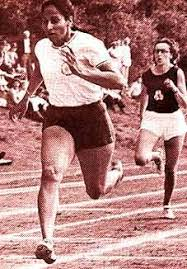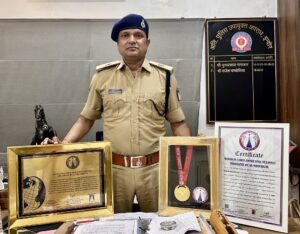Kamaljit Sandhu is a celebrated name in Indian athletics, known for becoming the first woman to win a Gold Medal at the Asian Games for India. Her victory in 1966 was a significant milestone in Indian sports, marking the beginning of more women athletes making their mark at international competitions.
Kamaljit Kaur Sandhu , March 5, 1947 , Ludhiana, Punjab, India
Kamaljit was born in a Sikh family in Punjab. She was encouraged to pursue sports from a young age and quickly showed promise in track and field events, particularly in sprints.
Kamaljit Sandhu developed a passion for athletics while attending school and soon became involved in competitive track and field events. She was especially drawn to sprinting, and her talent in the 400-meter race eventually gained her national recognition.
She started her training at the Punjab University and was coached by R.K. Khosla, a well-known figure in Indian athletics.
Historic Achievement: Kamaljit made history at the 1966 Asian Games held in Bangkok, Thailand, by winning the Gold Medal in the 400 meters.
She won the Gold Medal in a time of 55.2 seconds, which was a new Asian Games record at that time.
Significance: This victory made her the first woman athlete from India to win a Gold Medal at the Asian Games, a monumental achievement for Indian women in sports. Her win not only brought her national recognition but also marked a turning point for the inclusion and success of women athletes in India.
1966 Asian Games: Kamaljit’s victory in the 400m was the highlight of the 1966 Asian Games for India, and her Gold Medal was a major contribution to India’s medal tally at the event.
National Champion: She was a dominant force in Indian athletics and won multiple national titles in 400 meters and relays throughout her career.
Commonwealth Games Participation: Kamaljit also represented India in the Commonwealth Games, further solidifying her position as one of India’s top sprinters in the 1960s.
Decline in Performance: After her Asian Games success, Kamaljit continued to compete, but her performances in subsequent years did not reach the same level of excellence as her 1966 Gold Medal victory.
Retirement: After a brief but impactful career, Kamaljit retired from professional athletics and shifted her focus to other aspects of her life. While her competitive days were behind her, her legacy continued to inspire other women athletes to pursue their dreams.
Padma Shri: In recognition of her remarkable achievements, Kamaljit Sandhu was awarded the Padma Shri, India’s fourth-highest civilian award, in 1967 for her contribution to Indian athletics and her historic Gold Medal win.
Legacy in Indian Sports: Kamaljit’s achievement helped pave the way for more women to enter and succeed in competitive sports in India. Her success was an inspiration to many young girls across the country who aspired to follow in her footsteps.
Kamaljit’s Gold Medal at the 1966 Asian Games was a pioneering achievement in women’s athletics, especially for a country like India, where women were not commonly seen in competitive sports at the time.
She broke barriers for women athletes and played a role in increasing the visibility and support for women’s sports in India, helping to empower future generations of women athletes.
After retiring, Kamaljit remained involved in sports in various capacities, though she largely kept a low profile in the public eye.
Her victory remains a significant milestone in Indian athletics, and she is remembered as a pioneer for Indian women in sports.
Kamaljit Sandhu’s historic win of the Gold Medal in the 400 meters at the 1966 Asian Games stands as a defining moment in the history of Indian women’s athletics. Her achievement not only brought India its first Gold Medal in women’s athletics at the Asian Games but also helped inspire future generations of women to take up sports. Kamaljit’s contribution to Indian sports is remembered as a trailblazing moment for women in athletics and a landmark victory in India’s sporting history.







